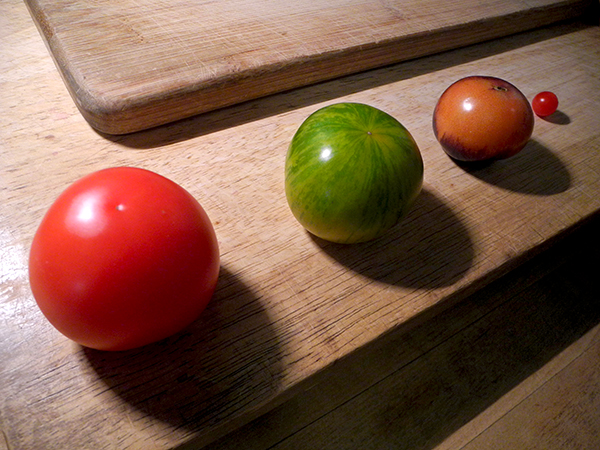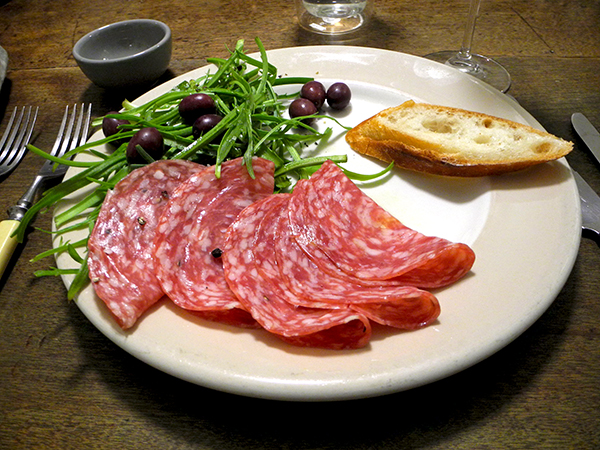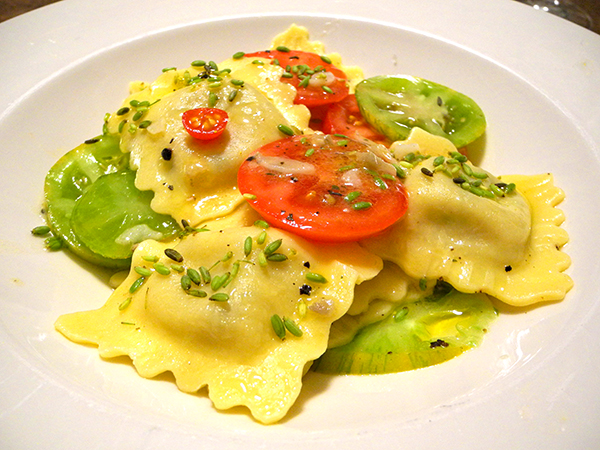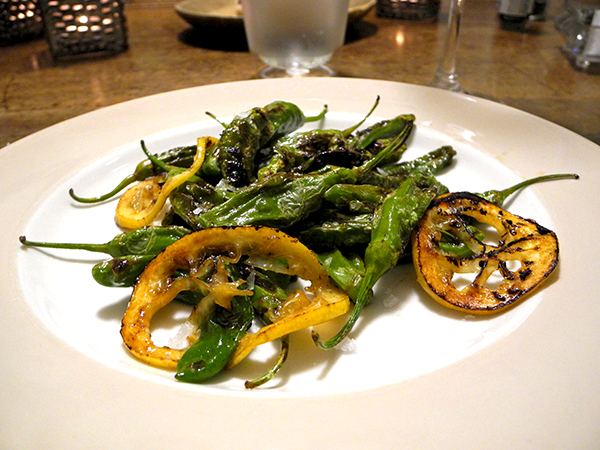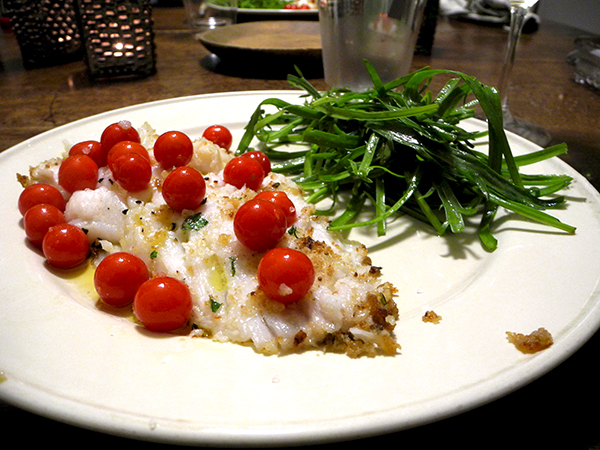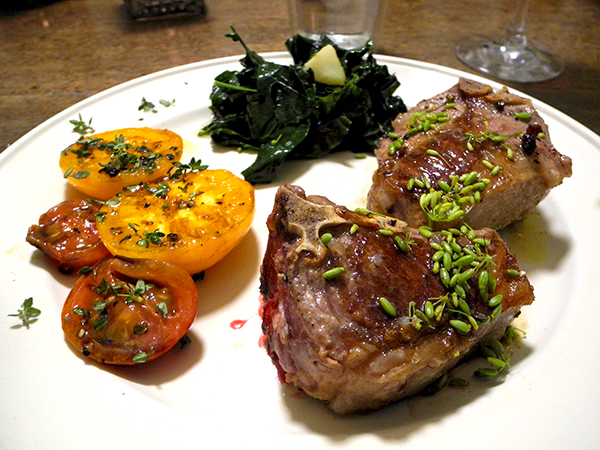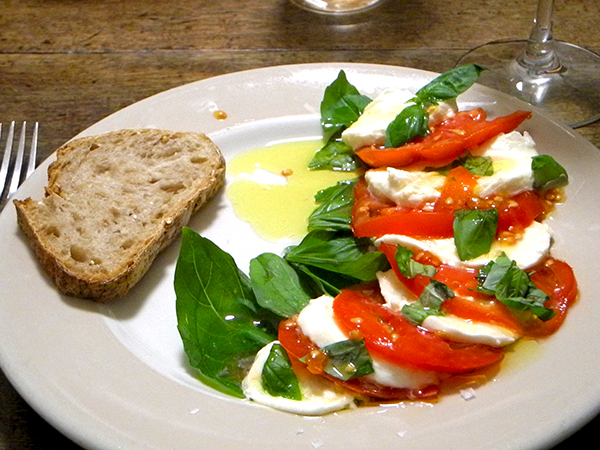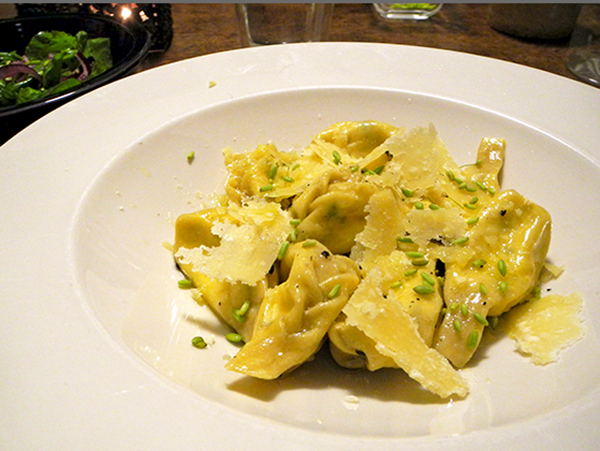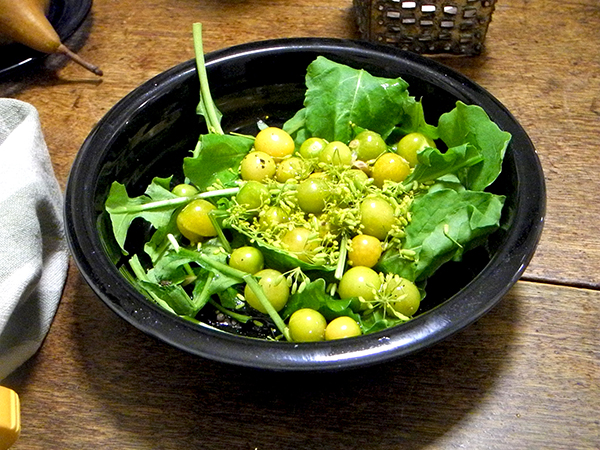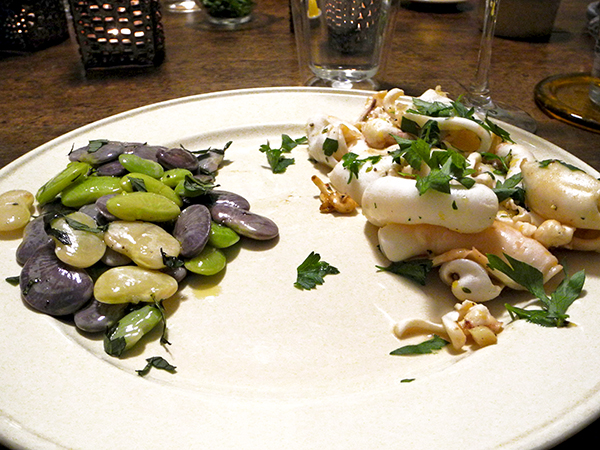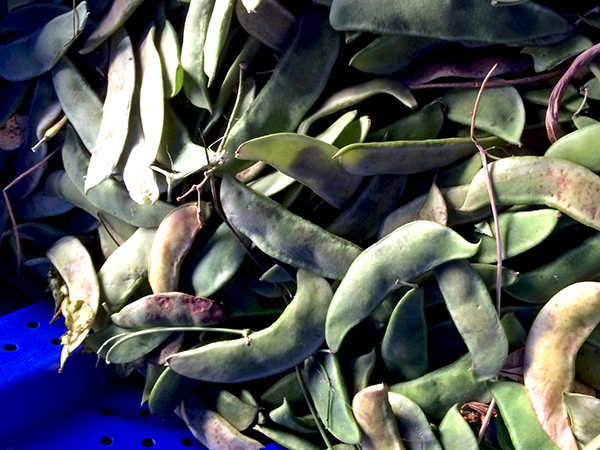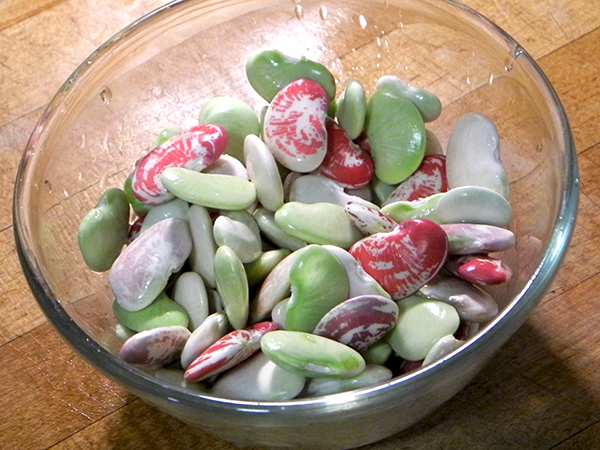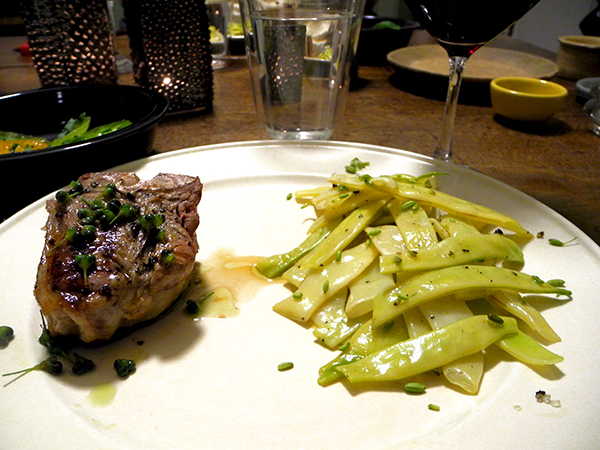tomato solar system of sorts
antipasto
pasta
Simple again.
I started with a package of Colamecos’ uncured soppressata which had been lying in the refrigerator, waiting, and I was once again reminded of how good this product is, and how well it keeps until called to introduce a meal. The minutina, from Norwich Meadows Farm, was what remained from yesterday’s dinner, the pasta had been lying in the freezer (and in fact didn’t have to be defrosted at all). The tomatoes, from Berried Treasures Farm, had been on the windowsill, and the fresh fennel seeds, from Lani’s Farm, were what remained from a bunch of fennel branches I had ‘harvested’ for a meal two days earlier.
It wasn’t fast food, but it wasn’t really slow, and it was good.
NOTE: I have to be honest about the first picture at the top: While I had intended to use all four of those tomatoes, I ended up slicing only the first, second, and fourth from the left. For those who might be interested, the smallest tomato, a single Mexico ‘midget’, had escaped my eye when I was rounding up the rest of its kind for last night’s meal.
- The soppressata came from Whole Foods; the minutina, drizzled with good olive oil and a squeeze of lemon, was from Norwich Meadows Farm, and was combined with some unpitted Gaeta olives from Buon Italia; the baguette was from Balthazar’s, via the Whole Foods bakery counter
- the Rana artichoke- and ricotta-filled ravioli was from Eataly, the tomatoes were from Berried Treasures Farm; they were sauced with one clove of John D. Madura Farm garlic, sliced, which had been heated in olive oil, and freshly-ground black pepper; some pasta cooking water was added to the mix while it was warming up on top of the stove, and the plates were sprinkled with fresh fennel seeds from Lani’s Farm
- the wine was an Italian (Vicenza) sparkling, Prosecco Brut Primaterra NV Montorso Vicentino I
- the music was Bruckner Symphony No 2, the Berlin Philharmonic conducted by Daniel Barenboim
